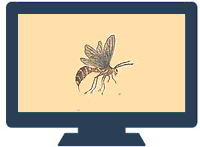Entomology, Department of

Department of Entomology: Distance Master of Science Projects
Date of this Version
2016
Document Type
Project
Citation
University of Nebraska-Lincoln Department of Entomology Online Masters Program Final Project. Lincoln, Nebraska.
Abstract
Mountain pine beetles (Dendroctonus ponderosae Hopkins) are an endemic insect of western North American forests. The beetle’s range extends north to British Columbia in western Canada, south along the western United States and into northern Mexico. It has moved east into the states of Arizona, Colorado, Idaho, Montana, Nevada, South Dakota, Utah, and Wyoming. Live specimens of lodgepole (Pinus contorta var. latifolia), ponderosa (Pinus ponderosae), and white bark (Pinus albicaulis) Pines are preferred hosts. Climate conditions such as drought create outbreak conditions that last for only a few growing seasons or several years if these drought conditions continue. Mountain pine beetles are univoltine, having one brood per year, and can reproduce in all pine species within their flight range. The mountain pine beetle has a complicated life cycle, and includes a symbiont blue wood staining fungi, which depending on environmental factors could be one of four species, Grosmannia clavigera, Leptographium longiclavatum, Ophiostoma montium, and Ceratosystiopis sp. 1. The current outbreak began in the late 1990s. Many factors have contributed to the current outbreak, but two are getting majority of blame: overstock of mature hosts of lodgepole, ponderosa and white bark pines, and climate change. A comparison of three locations and how different communities are dealing with the continuing outbreak is discussed. Control and management options, as well as maintaining a defensible space around home in the forest is also discussed.


Comments
Copyright 2016 Natalie L. Greynolds